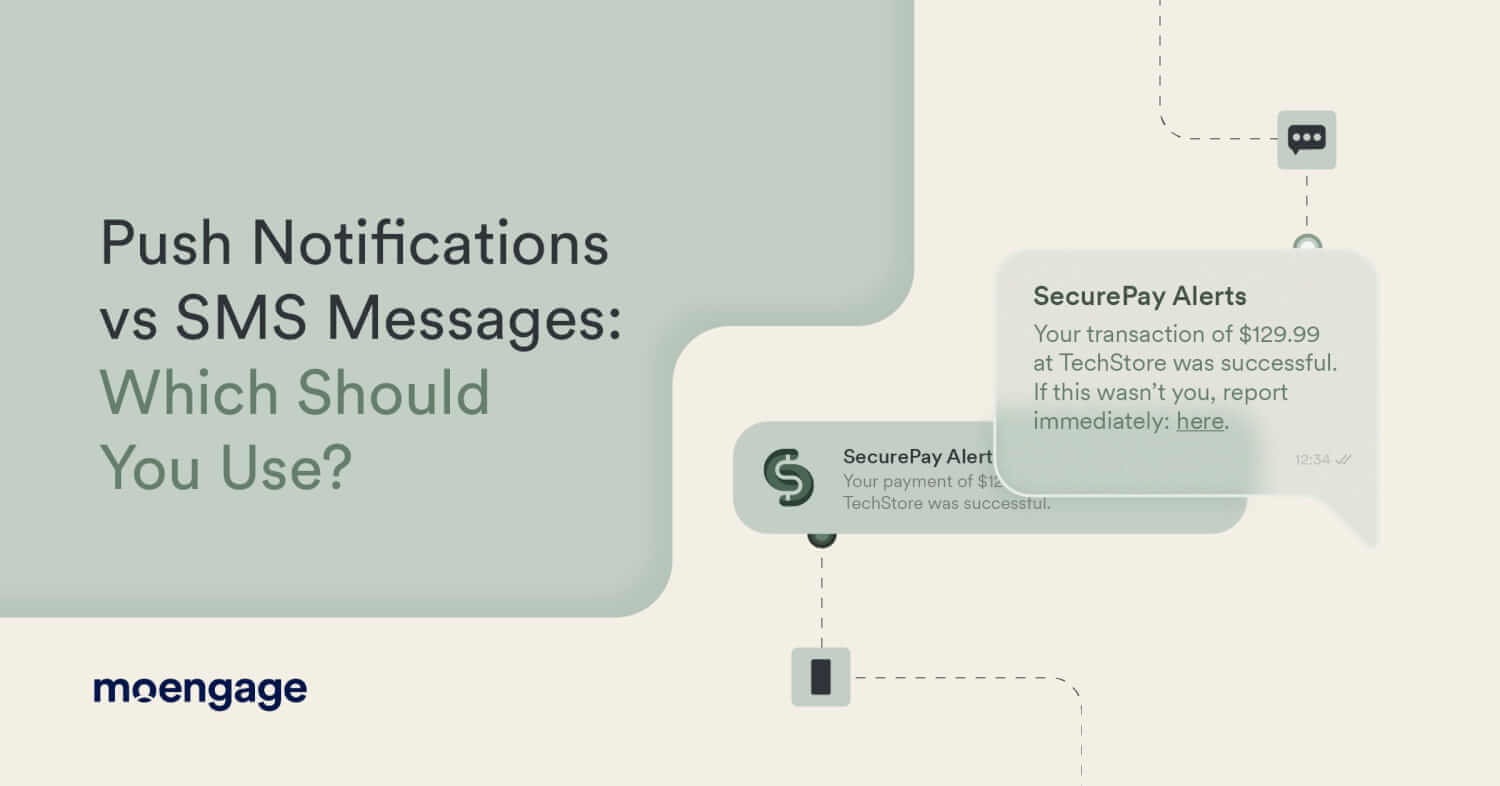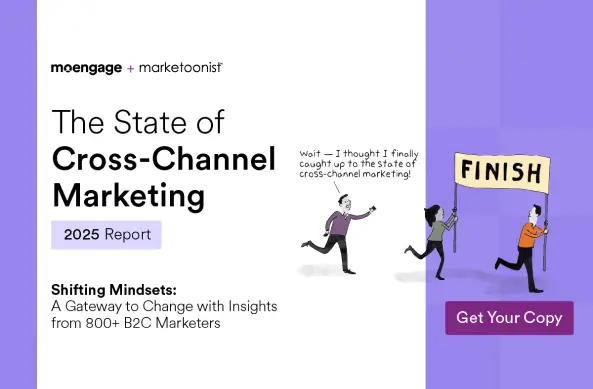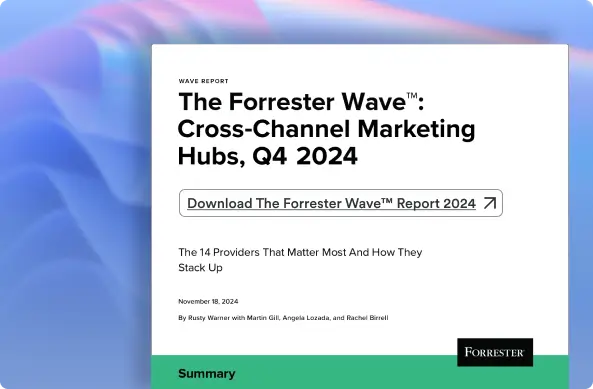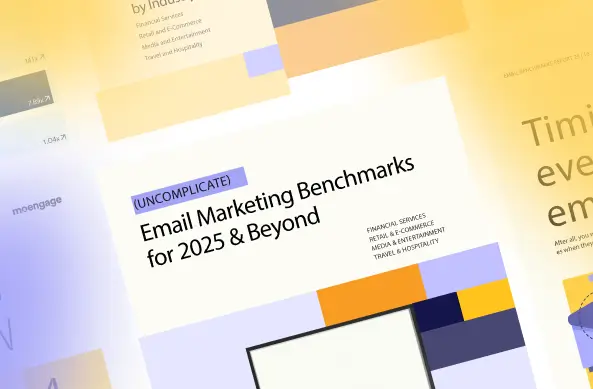Push Notifications vs. SMS Messages: Which Should You Use?

Every day, the average smartphone user checks their device 63 times. But with dozens of apps and constant notifications competing for attention, how do businesses ensure their messages are actually seen and acted upon?
For brands looking to engage mobile users, two channels stand out, but which should you choose: mobile push notifications vs sms messaging? Both offer direct, real-time communication, but they work in very different ways. Mobile push notifications require an app and internet access, while SMS messages rely on cellular networks and work on any phone.
The challenge isn’t just choosing one over the other—it’s knowing when to use each for maximum impact. In this article, we’ll break down the differences, advantages, and best use cases for push notifications and SMS, helping you build a messaging strategy that truly resonates with your audience.
Let’s jump in.
What’s the Difference Between Push Notifications vs SMS Messages?
Push notifications are app-based messages that require internet access and user opt-in, offering rich media and interactivity. SMS messages are cellular-based, work on any phone without internet, and have a 98% open rate, but incur per-message costs and a 160-character limit.
Key Differences in Detail:
| Feature | Push Notifications | SMS Messages |
| Delivery Method | Sent via apps, requires internet | Sent via cellular network, no internet required |
| Opt-in Required? | Yes (users must enable notifications) | No (except for marketing messages) |
| Reach | Limited to app users | Universal, works on any mobile device |
| Engagement | Higher for app users, interactive elements | 98% open rate, quick response times |
| Cost | Free to send | Per-message cost applies |
| Content Format | Supports images, buttons, deep links | Text only, 160-character limit |
Both channels play a vital role in customer engagement and retention, but their strengths make them better suited for different types of communication.
Advantages and Disadvantages of Push Notifications
Push notifications are a powerful engagement tool for app users. They support rich media, deep links, and personalization features making them ideal for driving user activity within an app.
Pros of Push Notifications
- Higher Engagement Rates – Push notifications can increase app engagement by 88%.
- Rich Media Support – Includes images, GIFs, videos, and interactive buttons.
- No Per-Message Cost – Businesses can send unlimited notifications without SMS charges.
- Personalization & Behavioral Triggers – Users receive relevant messages based on past behavior, location, or preferences.
Cons of Push Notifications
- Requires an App & Opt-In – Users must download the app and enable notifications. Global opt-in rates are around 67.5%.
- Dependent on Internet Access – Won’t reach users without Wi-Fi or mobile data.
- Easier to Ignore or Disable – Users can mute notifications or turn them off entirely.
Advantages and Disadvantages of SMS Messages
SMS is one of the most reliable communication channels. Since SMS works without an app or internet, it’s the preferred channel for urgent, time-sensitive updates.
Pros of SMS Messages
- Universal Reach – Works on all mobile devices, no app required.
- High Open Rates – 90% of SMS messages are read within 3 minutes of delivery.
- Reliable Delivery – Operates on cellular networks, ensuring receipt even in low-signal areas.
- Great for Urgent Messages – Commonly used for OTP codes, fraud alerts, and appointment reminders.
Cons of SMS Messages
- Higher Costs – Businesses pay per message, especially for large-scale campaigns.
- Limited Content & Interactivity – Restricted to 160 characters with no support for rich media.
- Spam & Opt-Out Risks – Excessive SMS marketing can lead to unsubscribes and legal concerns.
Push Notifications vs. SMS Messaging: Which is More Effective?
Effectiveness depends on context.
- Push notifications excel at app engagement, promotions, and behavior-triggered updates.
- SMS messages are best for urgent alerts, transactional updates, and guaranteed delivery.
Comparison: When to Use Push vs. SMS
| Message Type | Best Option |
|---|---|
| Flash sales & discounts | Push Notifications |
| Account verification (OTP, 2FA) | SMS Messages |
| Abandoned cart reminders | Push Notifications |
| Bank fraud alerts | SMS Messages |
| E-commerce order tracking | SMS Messages |
| Personalized product recommendations | Push Notifications |
| Travel itinerary changes | SMS Messages |
To maximize impact, businesses should use both channels strategically based on audience needs and message urgency.
How to Choose Between Push Notifications vs SMS Texts
When deciding which channel to use, consider:
- Your Audience & Reach
- Do your customers actively use your app? Use push notifications.
- Do you need to reach users without an app? Use SMS.
- Urgency & Importance
- Is the message time-sensitive? Use SMS.
- Is it a marketing or engagement message? Use push notifications.
- Cost & Budget
- Need a cost-effective option for frequent messaging? Choose push notifications.
- Need guaranteed delivery, even at a cost? Choose SMS.
- Content Type
- Want to send rich media (images, buttons, deep links)? Use push notifications.
- Need a plain-text message that works universally? Use SMS.
Best Practice: Use a Multi-Channel Approach
Rather than choosing one over the other, combine push and SMS for a seamless customer experience. Below are some ideas for how to combine push notifications with SMS messaging:
- Example 1: Send a push notification first. If a user doesn’t engage, follow up with an SMS reminder.
- Example 2: Use push for promotions but SMS for confirmations (e.g., appointment reminders).
This hybrid approach ensures maximum engagement and reliability. Take it a step further by incorporating email for a truly cross-channel strategy.
Push Notifications vs SMS: Conclusion
Both push notifications and SMS messages have unique strengths. Push notifications are ideal for cost-effective app engagement and marketing, while SMS messages ensure reliable, high-priority communication.
To maximize engagement and conversions, businesses should use a multi-channel strategy, leveraging push for engagement and SMS for urgent messages.
Want to optimize your messaging strategy?
Learn how MoEngage’s cross-channel marketing platform can help you automate and personalize messaging for higher engagement and conversions. Schedule a demo to learn more.








